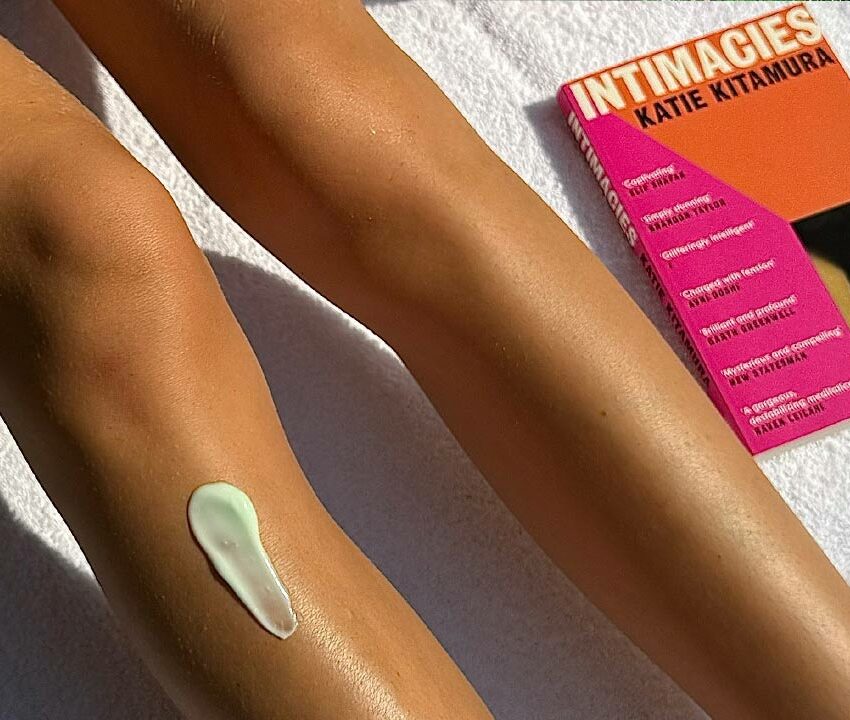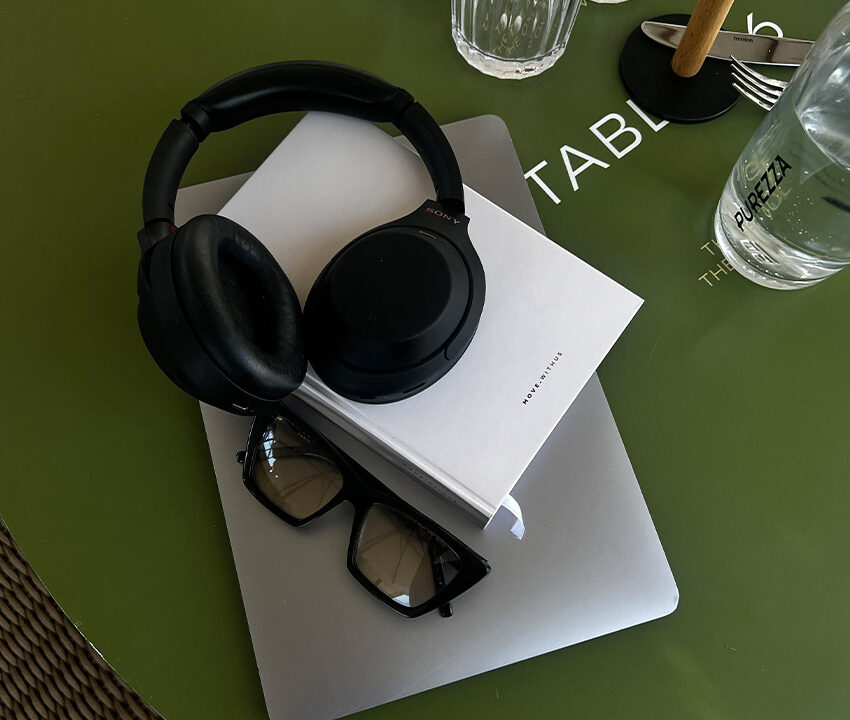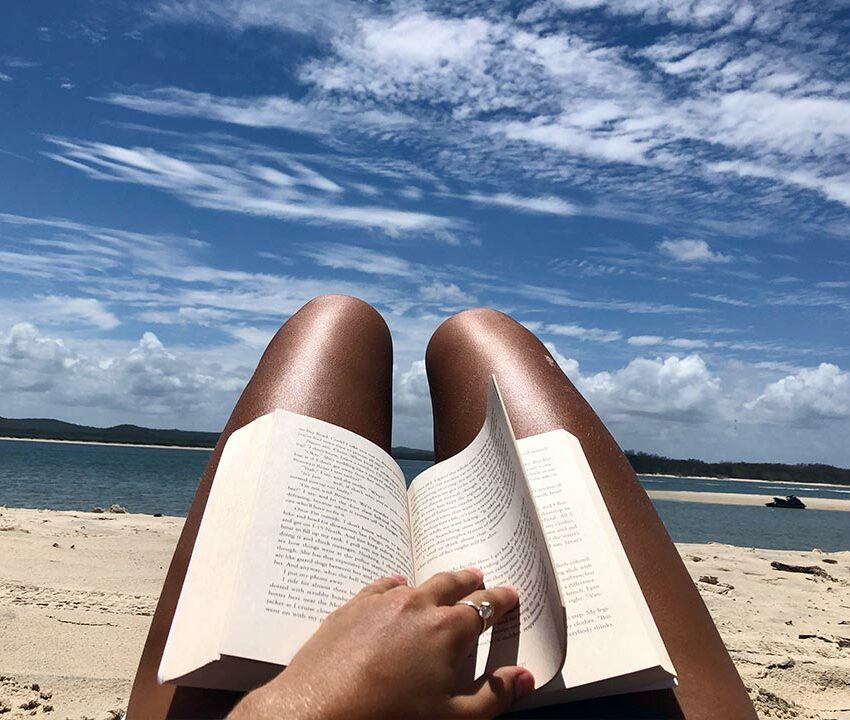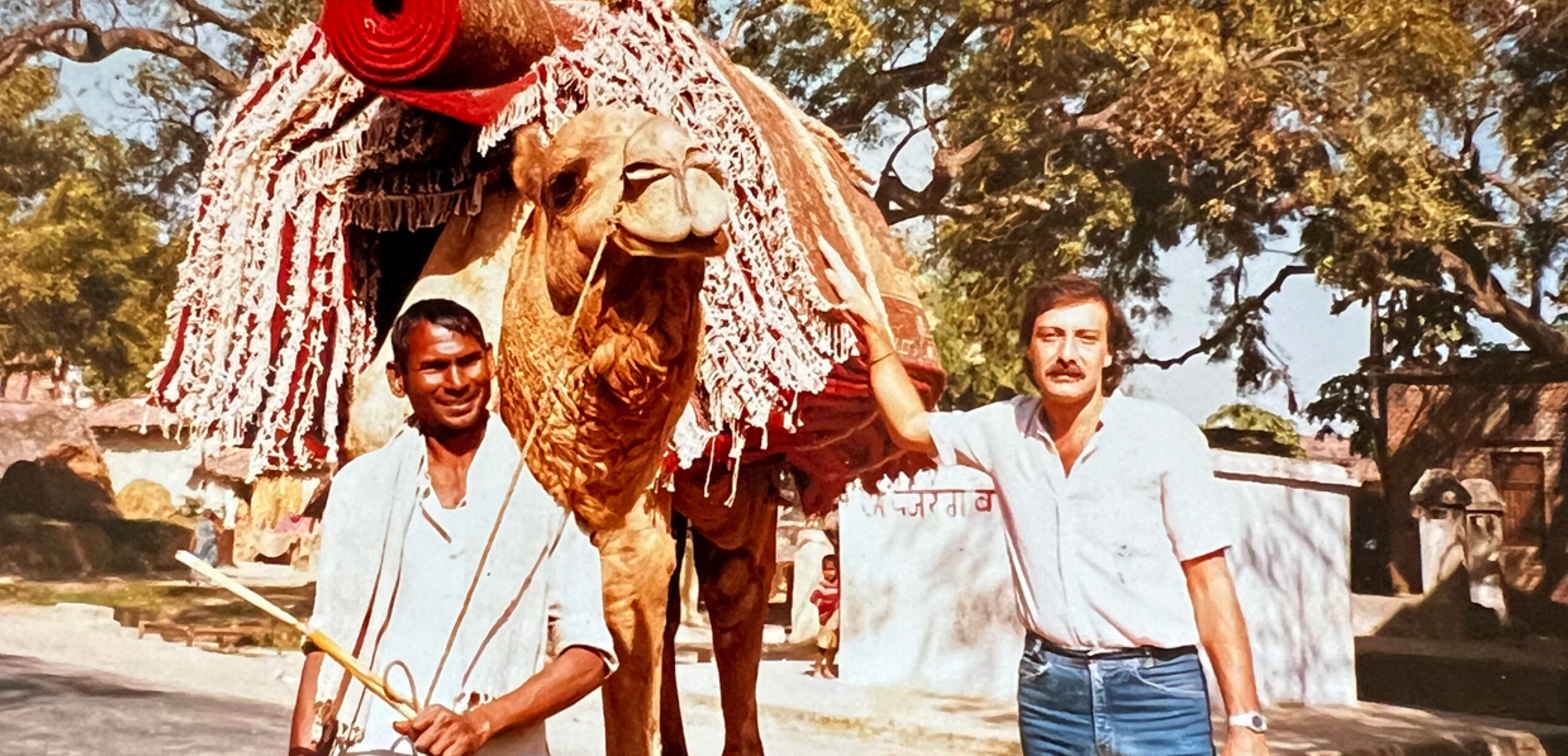
Travel Diaries: Hali Rugs Founder Ian Swart On His Hippie Years And Indian Adventures
Hippie trails
A self-proclaimed hippie raised by a father in the rug industry, Ian Swart, founder of the iconic rug store Hali Rugs, recalls his fascinating early life and travels in his new memoir Life’s Journey On A Magic Carpet.
Tell me about your early life. How did being raised by family in the rug industry influence you?
In my early years, I went to Caulfield Grammar and then on to Monash University to study law. However, I always had a passion for fashion and, while at university, worked part-time at Chesters Menswear at the Southern Cross Hotel. During my third year at Monash, I took on a fashion agency called Michelle Lucien, based in Sydney, to represent in Melbourne. I loved being in the fashion world and eventually gave up law to pursue a career in it. This career took me overseas to Europe to search for samples, and so began my love of travelling. Interestingly, the rug industry, which my father was in, didn’t influence me at the time or spark any desire to enter it during those years.
Tell me about your travels as you got older. What inspired this wanderlust, and were there any particular places that stood out to you?
In 1974, as a young married couple, my wife and I decided to travel overseas indefinitely before settling back in Melbourne to start a family. We began in Greece and travelled through Europe in a campervan, then worked in Amsterdam and London before heading overland back to Australia over an eight-month period. At that time, the world was at peace, so it was possible to travel through Turkey, Iran, Afghanistan, Pakistan, India, Kathmandu, Burma, Thailand, and Indonesia. Something that would not be easy to do today. Of all the places we visited, India stood out as the most fascinating country.
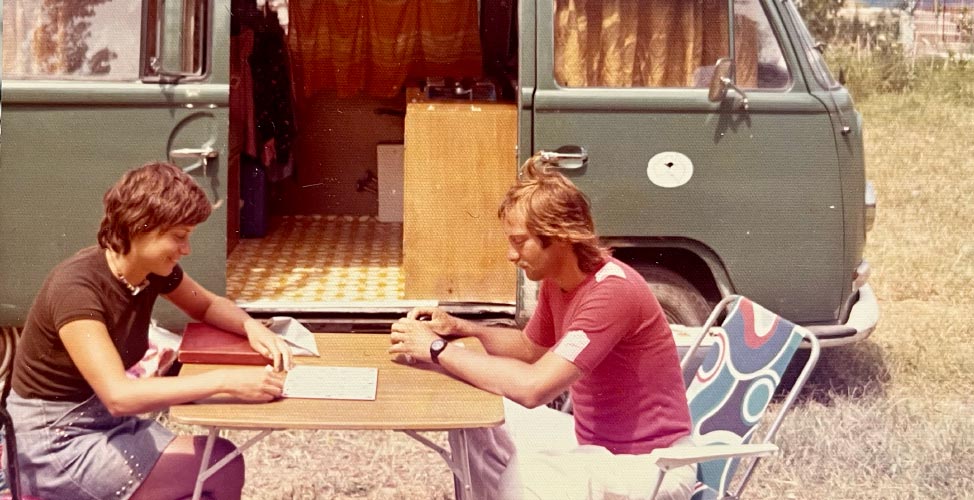
You describe yourself in the book as a hippie – what did that lifestyle look like for you?
This was the era of the hippie movement, and I was completely drawn into it. The Beatles, my favourite band, were a major influence on the movement, and the ideals of peace, love, personal freedom, and social equality resonated deeply with me. I wore colourful shirts, platform shoes, flared pants, grew a moustache, grew my hair long, and became a regular marijuana smoker. It was a changing time in the world. – I was there, I was part of it, and I feel very lucky to have been the right age at that time.
As a young Australian visiting new countries and cultures, did anything shock or amaze you?
Travelling overseas at a young age opened my eyes to a multitude of cultures, languages, foods, histories, architecture, and natural beauty so different from Australia, which has a shorter history and one main language. I couldn’t get enough of it – especially the history. Visiting different countries taught me so much, and I became captivated by the diversity of the world.
India plays a big role in your story. Can you paint a picture of your first visit to India?
I loved India from the moment a Sikh soldier welcomed us to “Mother India” at the border. It was magical – so full of contrasts. Every day felt like an adventure. India is often called the “subcontinent of diversity,” and it truly is. The blend of ancient traditions and modernity, from grand palaces like the Taj Mahal to the poorest shanty towns, captured me. The breathtaking landscapes, warm and friendly people, vibrant food culture, and state-by-state differences in language, architecture, and clothing fascinated me. There is no place quite like it.
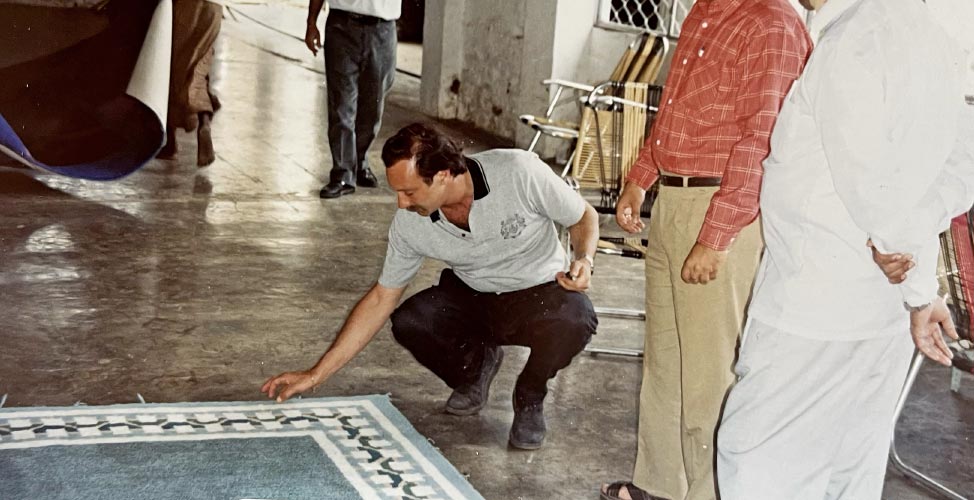
Was there a particular region or artisan you met in India that left a lasting impression on you?
Visiting the rug regions near Varanasi over 100 times has left a lasting impression. The villages, located about 60 kilometres from Varanasi in different directions, are reached by fascinating drives through small villages lined with shops selling local produce. The roads are alive with women in colourful saris, men walking or cycling, children playing, and a mix of trucks, cows, goats, chickens, pigs, camels, and even elephants. The rural landscape is dotted with small houses made from cow dung walls and farmers tending crops. It’s a vibrant, sensory-rich experience. What I loved in India was the opportunity to go straight to the villages where the rugs were made. Unlike Turkey, Iran, or Morocco, where rugs were bought from city warehouses, I could work directly with producers in India, sit with them, review pieces, and request changes in design or colour to suit Australian tastes. That direct collaboration became the backbone of the Hali business. I’d request a sample with my changes and, on my next trip, review it for production.
How did your experiences in India differ from your travels elsewhere — say, in Turkey or Morocco — in terms of rugmaking culture and philosophy?
In other countries, like Turkey, Iran, and Morocco, you generally dealt with wholesalers in urban warehouses and bought from what was available. In India, I could go to the source. That meant seeing the artistry up close, influencing the product, and creating something tailored. It felt more personal, more collaborative, and more meaningful.
What was it about Indian craftsmanship or the people you met that helped crystallise your vision for Hali?
Indians have excellent colour sense, their craftsmanship is outstanding, and the people are incredibly warm and welcoming. Because of this, I was able to push Hali forward. The partnership with Indian artisans became central to our brand’s identity.
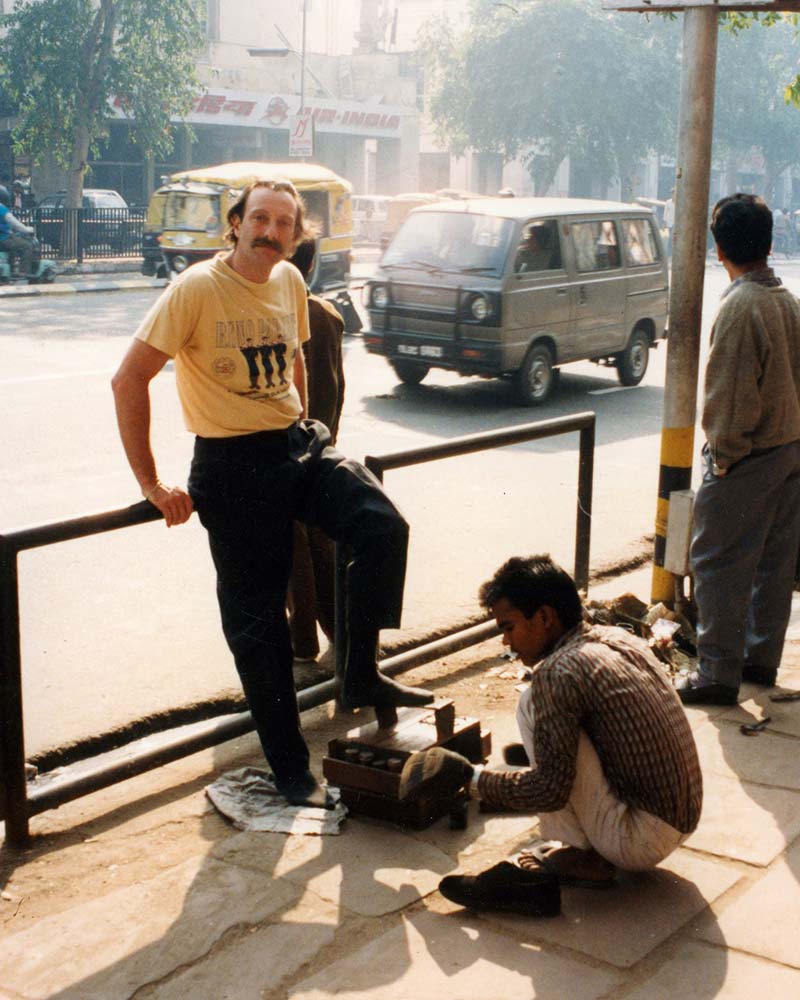
When did the idea to open Hali begin, and what does the name mean?
My father had a small rug store in South Yarra. In 1978, he went into the hospital, supposedly for a few days, and I stepped in to help. Unfortunately, he suffered a major setback and never returned to the business. We decided to close it down. I placed “closing down” signs on the windows and ran newspaper ads, and business boomed. On the last day, I put the remaining rugs in the boot of my car! That was when I realised rugs had a future. People were polishing floorboards and switching to hard flooring – it was the right time. I started Hali, naming it after the International Rug Magazine, which I later discovered is also the Turkish and Greek word for carpet.
Hali is a family business. Can you tell me about the role every member plays in the business?
I semi-retired five years ago, and now two of my children run the business very successfully. My son Dan handles buying, front-of-house, sales, and overall management. My daughter Rebecca manages the office, social media, marketing, and stock control. I remain involved in an advisory role, and I’m very proud of how they’ve taken the reins.
Can you give me an overview of your memoir Life’s Journey On A Magic Carpet?
My memoir isn’t traditional in structure – it’s written in two parts. Part One covers my hippie years in the late 1960s and early ’70s, my time at Monash, my fashion career, and a life-changing two-year journey overland from Istanbul back to Australia. Part Two covers my return to Australia, re-entering the fashion industry, and then, after my father’s accident, shifting into the rug industry. That took me back to India – a country I’d fallen in love with. I’ve now visited over 100 times, and the memoir is full of funny, heartfelt, and insightful stories about travel, life, and business.
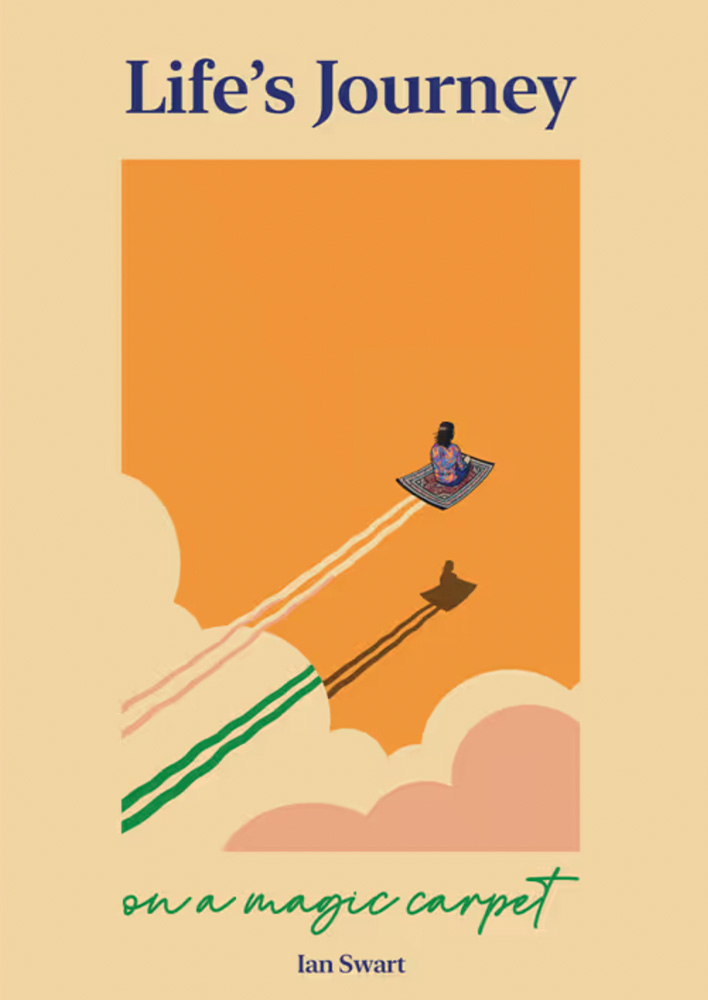
Booktopia Life’s Journey On A Magic Carpet by Ian Swart $38.75





